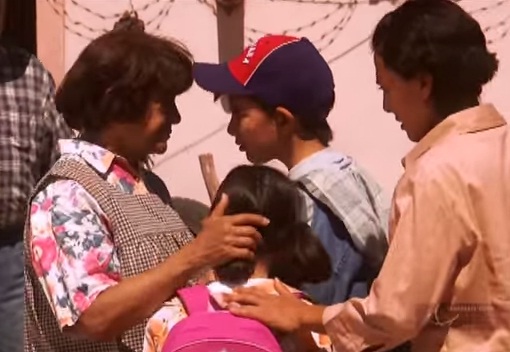EspañolWhy do people emigrate? How do they reach the United States? When they leave their homes, do they know they might never see their loved ones again? The events that take place before migrants leave their homes, perhaps the longest and most difficult part of the process, do not occupy much time at all in the media’s massive coverage of the so-called “immigration crisis” in the United States. The major media focuses almost exclusively on politics, reactions from supposed experts, and biased opinions that ignore the actual journey. They are missing out on the real story.

For this reason, the 2008 film 7 Soles becomes almost mandatory viewing. Although a fictional drama, the film contains more realism than much of that so-called news coverage. The film’s creator, Pedro Ultreras, is a well-known Mexican journalist and filmmaker, who has dedicated his career to Spanish-language journalism in the United States. His most recent work for Univisión documents the journey of Central American migrants who travel the southern US border on a train known as “The Beast.”
7 Soles is recommended for all those interested in learning more about where the migration story really beings.
In the movie, a Mexican woman named Ramona makes her way on foot to the US-Mexico border with her two young children, looking to be reunited with her husband after several years. Her husband went to the United States in search of the “American dream,” and after years of hard work, now has a home, a car, a job, and the promise of work for Ramona.
While living in Chicago, he hires a group of coyotes to reunite him with his wife and children. These coyotes find Ramona and her kids in Mexico and begin a hope-filled northward journey that ends in a nightmare.

The truthfulness of the film begins with Ramona and her children saying their goodbyes to Ramona’s parents. Without acknowledging it out loud, they all know that they will most likely never see each other again. Thus begins the heavy burden that most migrants carry with them: the breakup of the family.
Our protagonists embark on their journey alongside others who have also soliciting the coyotes’ services: an adult male, a young couple, and a breastfeeding mother. Regardless of age or condition, they all pursue the same dream.
Each with a gallon of water in one hand and few belongings on their backs, they begin their journey toward the Arizona desert. Already exhausted from the long trip and low on supplies, they are suddenly forced to change course to avoid detection from the US Border Patrol.
As a viewer, one cannot help but feel like another member of the migrant group.
After they learn their trip will take longer than expected, the violence and suffering that is to come seems inevitable. Soon, promises to be reunited with family will be broken.
The heartbreak that follows as members of the group begin to fall away, unable to continue and abandoned in the desert, is profoundly moving.
“This desert is a giant cemetery,” says the coyote who leads the group. The migrants are visibly distressed by the number of bodies left in the desert of people who could not complete their journey.

These scenes in Ultrera’s 7 Soles take place every day in the Arizona desert.
By the end of film, most viewers will be left with sadness and anger at the unfairness of the system. One cannot help but wonder how we have allowed this to continue under such unjust and unequal conditions, without the freedom to pursue our dreams. It is precisely that search for freedom — the pursuit of happiness — that drives so many to risk their lives to reach the border. Arbitrary lines created and maintained by politicians separate dreams from nightmares.
The film’s conclusion leaves us with a bit of hope. After sharing in their pain, viewers share in the relief and happiness of a family reunited. We see a father’s joy after finally being able to hold his child in his arms once again — a joy that is at this very moment denied to thousands of families.
They are 13 and 15 years old, traveling on “The Beast” from Honduras with their older brother who is 22. They’re going to Houston.
As the credits roll, Ultereas dedicated the film to the “memory of all the immigrants who have lost their lives on their way to a better life.”
During these times of mass media disinformation, it is our duty to become informed of the real human drama that is hidden way and diminished by reporters and poorly addressed by politicians.
Behind the “immigration crisis” hide stories like those of Ramona and her children. They are essential stories that remind us of the humanity we all have the capacity to share.
Si nos prohibe subirnos a La Bestia, caminaremos todo Mexico, pero no nos detendrán, me dijo un migrante de Honduras. pic.twitter.com/onnGvsVpIg
— Pedro Ultreras (@pedroultreras) July 13, 2014
If we cannot board The Beast, we will walk all the way across Mexico, but they will not hold us back, a migrant from Honduras said to me.
 Versión Español
Versión Español












